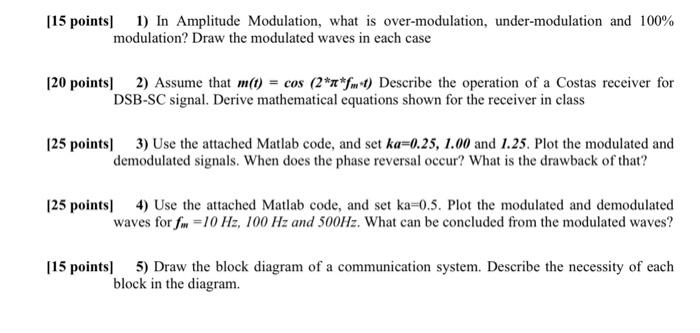Answered step by step
Verified Expert Solution
Question
1 Approved Answer
close all; clear all; Fs=8000;% sampling rate 8000 per sec Fc=1000; %in hertz Fm=10;% Modulating frequency in hertz t=linspace(0,0.2,Fs); ka=0.5; x=cos(2*pi*Fm.*t); %y=ammod(x,Fc,Fs) c=cos(2*pi*Fc.*t); y=(1+ka*x).*cos(2*pi*Fc.*t); figure

close all;
clear all;
Fs=8000;% sampling rate 8000 per sec
Fc=1000; %in hertz
Fm=10;% Modulating frequency in hertz
t=linspace(0,0.2,Fs);
ka=0.5;
x=cos(2*pi*Fm.*t);
%y=ammod(x,Fc,Fs)
c=cos(2*pi*Fc.*t);
y=(1+ka*x).*cos(2*pi*Fc.*t);
figure
plot(t,x)
figure
plot(t,c)
figure
plot(t,y)
for I=1:8000, % rectification
if y(I)
y(I)=0;
end
end
figure
plot(t, y)
z=fft(y);
f = (0:length(y)-1)*8000/length(y);
figure
plot(f,abs(z))
for I=30:8000, %filering
z(I)=0;
end
q=ifft(z);
%plot(t, abs(q))
figure;
subplot(2,1,1);
plot(t,x)
subplot(2,1,2);
plot(t,abs(q))
Step by Step Solution
There are 3 Steps involved in it
Step: 1

Get Instant Access to Expert-Tailored Solutions
See step-by-step solutions with expert insights and AI powered tools for academic success
Step: 2

Step: 3

Ace Your Homework with AI
Get the answers you need in no time with our AI-driven, step-by-step assistance
Get Started


